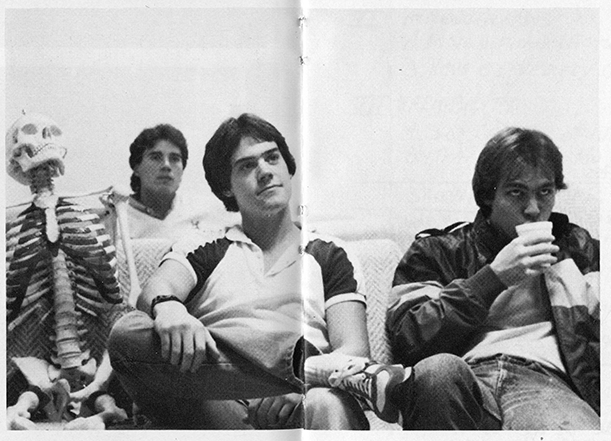Taking up running
Starting healthy habits can be beneficial no matter your age. Some adults decide to take control of their health by beginning a new exercise program. If running is an activity you choose to pursue later in life, set goals and follow important tips before starting your fitness journey.
“Exercise throughout your lifetime is like saving money for retirement – you do a little bit for a long period of time and it pays off,” said Dr. James McDeavitt, professor of physical medicine and rehabilitation and executive vice president and dean of clinical affairs at Baylor. “If you’re in your 50s, 60s or 70s and you’re still running, you should give yourself a big pat on the back – staying active probably adds years to life, and it certainly adds life to years.”
McDeavitt, an active runner who started running in his thirties, developed a guide for individuals who may be interested in taking up running later in life.
HEEL
H: Health check
If you plan to start running as a new activity, especially at 40 or older, you should consider an evaluation by a physician. This is particularly important if you have been sedentary, if you have symptoms of heart disease, or if you have a chronic medical condition. Your physician may advise testing to assess your exercise tolerance. It is important to keep in mind that certain medications could impact performance. Diuretics for blood pressure might predispose you to dehydration. Some medications might impact your exercise tolerance. Talk to your primary care physician and get a clean bill of health before running.
E: Expectations
As you age, your expectations and goals will almost always change. You might feel like you can perform like your 25-year-old self, but your body will likely disagree. Most serious runners set goals for pace and/or distance. As you age it is still desirable to set challenging goals but be realistic. Start slow and build slow.
“Runners typically think about running a certain distance or time. I ran a couple of marathons, but I do not think my body would tolerate the necessary training at this point. I still set goals to improve, but for shorter distances,” McDeavitt said. “Modifying your expectations as you age is important. The ultimate goal is to remain active”
E: Environment
Respect the environmental conditions as you train. Hot, humid conditions can be dangerous as a 20-year-old. As we age, we become more susceptible to exertional heat stroke. The risk of frostbite also increases with age. Pay attention to traffic, wear reflective clothing in low light conditions, stay hydrated and be aware of the conditions.
Years of pounding the asphalt can take a toll on the body. Try to spend some time on more forgiving surfaces, such as trails in public parks, sports fields or composite running tracks.
L: Listen
Listen to your body and take care of it. You should warm up before you run and cool down after you run, followed a consistent stretching routine. It is crucial to follow these steps, especially as you age. If something hurts, avoid running through injury. Take time to heal and be entirely pain-free for a few days before you run again, then start low and go slow. The aging body takes more time to heal. Runners should be well rested, have a strong appetite and feel their mood is elevated. If you do not experience this, you might be overtraining. Overtraining symptoms include feeling tired, rundown, anxious, depressed and having trouble sleeping. Refrain from training until you start feeling better.
If you are new to running, McDeavitt suggests mixing up your routine. Consider training by alternating running and walking. Run for a minute, then walk for a minute. As your fitness improves, change the ratio to incorporate more running. As long as you are moving forward, you are still realizing substantial health benefits.
The typical recreational runner should avoid running every day and incorporate resistance training in their exercise routine. McDeavitt recommends alternating runs with resistance training throughout the week: core strengthening, free weights, bodyweight exercises and balance activities. You can also consider replacing a longer run with a shorter session of speed work, hill running or stair climbing.
“I like to mix resistance training with running. Looking back, I wish I had done that 25 years ago. I feel better now mixing it up and having some variety other than just running,” McDeavitt said.
Setting goals
Set challenging, realistic goals when taking up running later in life. An individual who never ran before should not strive to run a marathon, but should have a goal similar to finishing a 5k. McDeavitt advises creating an exercise training plan with a calendar to build up to your goal, making little changes consistently over a long period of time. Plan in three-month blocks by starting slow and increasing efforts 5% each week. For example, start running 10 blocks for a week or two and ramp it up by adding another block gradually. It takes about three months to form a habit, so be consistent and move slow and steady. Avoid moving too quickly so you don’t end up getting hurt, frustrated, discouraged and ultimately giving up. After 90 days, you likely will develop a solid habit and from there, you can slowly increase your duration, frequency or intensity of exercise.
“If you’re going to take up something new, don’t expect your life to change tomorrow, next week or even next month,” McDeavitt said. “The key is to do some physical activity consistently. Commit to a modest but regular schedule that is sustainable with your other life demands. Start slow, stick with it, and have fun.”
By Homa Shalchi



